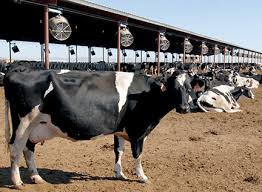Sea change needed in industrial growth
Zimbabwe has been affected by the modest fall in mineral prices around the world with export earnings in the last few months of last year falling, not by a lot but still falling, since minerals account for 80 percent of exports.
Imports fell a little, regrettably not as much as exports, so the balance of trade, never positive, showed a larger gap. This is filled by the diaspora remittances and incoming investments and some aid money, so the balance of payments will remain positive.
Even the negative balance of trade, where the actual dealing in the banks is affected, is not as serious as the raw figures suggest. A lot of the petroleum fuels, all imported, are paid for out of diaspora remittances, either directly when private individuals with foreign-based relations fill up or indirectly when people buy US dollars on the black market, in turn supplied in a large part by those remittances.
Corporate fuel purchases have to come out of the US dollar income of the buying companies, and a fair slice of private purchases come out of the same corporate funds, paid as allowances or salary, or very indirectly through the 30 percent sales of export earnings to Government which are then used to pay civil servants.
Economists have, once again, warned about the reliance of Zimbabwe and much of Africa on raw commodities, in Zimbabwe’s case minerals and tobacco in the main.
The pressure to upgrade mineral exports with basic local processing still keeps them as minerals although has the processing value added in Zimbabwe not with the first foreign buyer.
That does not affect the price fluctuations since global prices are marked in processed minerals, usually metal bars or, in the case of lithium and other highly reactive metals, in two or three pure salts.
The solution, as always, has to be in manufacturing, converting the raw commodities into finished articles.
These will still rise and fall in price according to the underlying commodity, but not as dramatically as the manufacturing costs and profits are fixed, so the percentage of the value that comes from the commodity is much lower.
We see this in our petrol and diesel prices as the price of crude oil rises and falls. Huge fluctuations in the world price of crude develop into much smaller changes in the prices of refined fuels, because the refining costs are largely fixed as a function of volume as are the transport costs by tanker and pipeline.
But to boost manufacturing we need a revolution in our industrial sector, and a great deal of expansion in the primary industry, where Zimbabwe is particularly weak.
Much of our industry is secondary industry, and besides some agro-industrial processing such as the millers, uses a surprising amount of imported raw materials to make stuff for the local market. It is not unknown for a factory to have 100 percent imported raw materials.
We have to go back into colonial times to see how this was created. Until the Second World War both the British South Africa Company and then the local settler Government were fundamentally opposed to seeing Southern Rhodesia industrialising.
There would be some local industry of course, to cut some costs. So brickfields, a brewery and millers were set up.
But generally the economic model was for Southern Rhodesia to be largely a commodity producer and exporter and to import finished manufactured goods.
The reasons might seem odd to modern Zimbabweans, but were largely social. The authorities were keen on immigrants, the whites coming in, to be “gentlemen” who preferably had attended the great private schools in England and South Africa and were of “good family”.
They could farm very large farms or own mines, but there would be only a very small white working class and so little pressure for what were seen as socialist tendencies.
The fact that labour was largely unskilled indigenous rather than imported whites was seen as an advantage.
Cecil John Rhodes had stressed this point, that in Southern Africa any class problem would be a race problem, and the authorities could keep the darker-skinned people under control and in any case make sure hardly any could vote.
The Second World War, which triggered the industrialisation of South Africa, had a similar but much smaller effect on Southern Rhodesia.
Some secondary industry did open, but even so with South Africa next door and no “poor whites” to cope with and find jobs for, a major industrial base was not required.
Post-war more factories were opened, and new industries established, and a sort of class structure started being created with the employment of semi-skilled blacks educated through the missions and an increasing number of skilled manual workers immigrating from Britain and South Africa, but with a colour bar maintained in industry in practice even when reforms during the Federation did abolish it legally.
Skilled workers were white, and regarded themselves as part of the establishment rather than the working class, and semi-skilled and unskilled workers were black and could be kept down.
So industry was growing, but was not large.
UDI made some fundamental changes. The sanctions on trade as well as finance made important substitution and what amounted to a planned economy essential.
This created a much larger industrial base, but one that relied on secondary industry, with often imported raw materials and components, and only modest growth in the industry that relied on local raw materials.
Zisco and the paper mills in Mutare were examples of the local raw material industry, as was David Whitehead in Chegutu and Kadoma, and the three cement factories, but these were in a tiny minority and even they were into import substitution, not exports.
UDI Rhodesia was still a commodity exporter, but an ever higher percentage of imports were of components, chemicals and other processed raw materials rather than of the finished products themselves.
That was the industrial base inherited by Zimbabwe, and maintained for many good reasons until the crashes in the late 1990s and 2000s and a surge in imported consumer goods.
The closure of Zisco, dollarisation and the collapse of David Whitehead just hammered a lot of other industry.
The Second Republic, but reversing dollarisation, encouraging investment and other measures did provide an environment that reversed industrial decline and started industrial growth.
But again import substitution was the prime focus, with the percentage of goods on shop shelves made in Zimbabwe being a major measure of success.
We now need to go back into the roots of how other countries industrialised and note that primary industry must lead the way. To a degree this has started.
The most obvious is Dinson Iron and Steel Works which is shortly to commission its first phase and bring steel making back to Zimbabwe with a growing product range that will include rod and sheet steel as more phases are commissioned.
But Disco is almost out on its own. Cement manufacture is rising, for local use, and some progress is being made in chemicals, to cut import bills. David Whitehead under new owners is about to start processing Zimbabwean cotton lint.
These industries are important, and Disco at least will be exporting steel, but the next stage is exporting manufactured goods made from the products that these concerns produce.
We need to be making and exporting steel products, not just steel. We need to rebuild a clothing sector that makes and exports cloths using David Whitehead fabric, We need Zimbabwean factories using our new chemical industry to make plastic goods and other products. We need to make lithium batteries not export lithium carbonate.
This sort of industry is expensive to set up and requires a lot of investment. But we have managed to attract serious investors such as Disco into the primary industry, and in that plethora of secondary and tertiary industry that are substituting for imports there are several companies that could switch to Zimbabwe raw materials once the primary producers make the stuff.
But fundamentally we need that sea change, that we cease being primarily a commodity exporter and become an exporter of manufactured goods.
We will still export commodities, since we have a lot of them, but the percentage of manufactured goods, made from Zimbabwean raw materials, must become the main measure of industrial success.-ebusinessweekly









